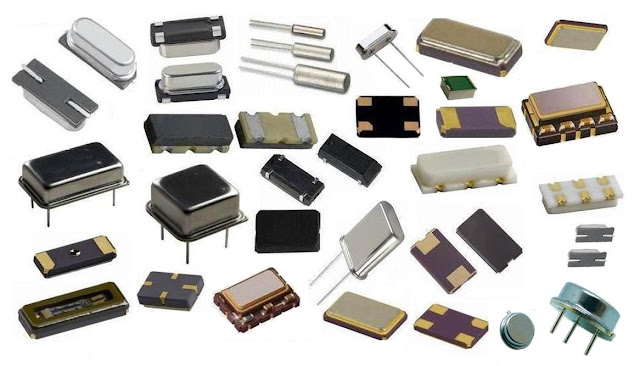Crystal Oscillators: How They Work and Why They Matter?
Crystal oscillators are essential components in modern electronic devices, from smartphones and laptops to medical equipment and communication systems. They provide precise and stable timing signals that are crucial for the operation of digital circuits and communication protocols. In this article, we will explore the working principles of crystal oscillators and explain why they matter in electronic design.
A crystal oscillator is a circuit
that generates an electrical signal with a fixed frequency and waveform by
utilizing the mechanical resonance of a piezoelectric crystal. A piezoelectric
crystal is a material that can generate an electric charge when subjected to
mechanical stress, and vice versa. When a voltage is applied across the
crystal, it vibrates at its natural frequency, which depends on its shape and
size. The mechanical vibrations of the crystal generate a corresponding
electrical signal, which can be amplified and used as a clock or reference
signal in electronic circuits.
The Crystal
oscillator market was valued at
US$ 2,082.5 Mn in 2021 and is forecast to reach a value of US$ 2,898.33 Mn by 2030 at a CAGR of 4.0% between 2022 and 2030.
The most commonly used crystal in
oscillator circuits is quartz, due to its high stability, low cost, and
availability. Quartz crystals are cut in a specific orientation and shape to
exhibit a well-defined resonance frequency and temperature stability. The
crystal is mounted in a holder, which provides mechanical support and
electrical contacts. The holder and the crystal are then enclosed in a
hermetically sealed package, which protects the crystal from environmental factors
such as temperature, humidity, and mechanical shock.
To generate an oscillating
signal, the crystal is connected in a feedback loop with an amplifier circuit.
The amplifier circuit amplifies the signal from the crystal and feeds it back
to the crystal through a frequency-selective network, which allows only the
desired frequency to be amplified. The feedback loop creates a positive
feedback effect, which causes the amplitude of the oscillating signal to
increase until it reaches a steady-state value
The frequency of the oscillating
signal is determined by the resonance frequency of the crystal, which depends
on the crystal's shape, size, and cut. The resonance frequency can be adjusted
by changing the load capacitance connected to the crystal or by trimming the
crystal's electrodes. The frequency stability of the oscillator depends on the
quality of the crystal and the temperature stability of the amplifier circuit.
Higher-quality crystals and temperature-compensated amplifiers can provide
higher stability and accuracy.
Crystal
oscillators are widely used in electronic devices that require precise
and stable timing signals, such as clocks, microprocessors, data converters,
communication systems, and navigation systems. They provide a high degree of
accuracy and stability over a wide temperature range, which is crucial for the
proper operation of these systems. Crystal oscillators also have a low phase
noise, which means that the frequency fluctuations of the oscillating signal
are minimized, resulting in a cleaner and more reliable signal.
In conclusion, crystal
oscillators are essential components in modern electronic devices that require
precise and stable timing signals. They utilize the mechanical resonance of a
piezoelectric crystal to generate an oscillating signal with a fixed frequency
and waveform. The frequency stability of the oscillator depends on the quality
of the crystal and the temperature stability of the amplifier circuit. Crystal
oscillators provide a high degree of accuracy and stability over a wide
temperature range and are widely used in a variety of electronic applications.




Comments
Post a Comment